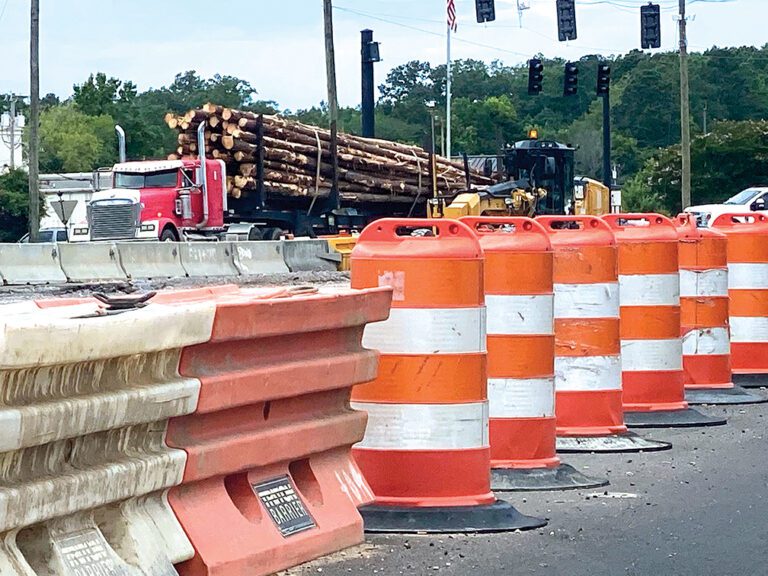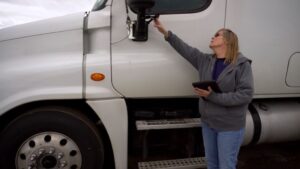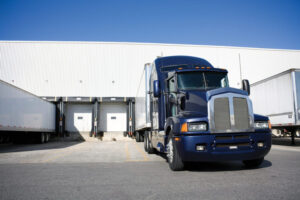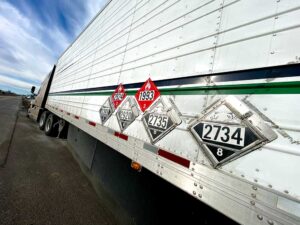“Fines doubled in construction zone.” People who make their living on the road see this sign on a daily basis; some see it several times a day. There’s a good reason for this.
Your chances of being involved in a collision go way up when those orange cones (or barrels) come out.
The National Highway Traffic Safety Administration (NHTSA) keeps statistics on construction zone collisions and reports some of them through its Fatality Analysis Reporting System (FARS). It takes a while to collect data from all 50 states plus U.S. territories, so the most recent statistics are from 2021.
The numbers are revealing.
In 2021, 33% of work zone crashes involved a commercial motor vehicle (CMV). Far less than 33% of the vehicles on the road are CMVs, so that number points to the trucking industry as a large contributor.
Another fact the NHTSA reported is that 24% of work zone accidents involved a rear-end collision.
It’s no secret why there are so many collisions in construction zones. Changing traffic patterns, confused motorists, rough roadways and other factors combine to increase everyone’s risk of an accident.
But there’s another reason: Impatience. No one likes the lower speed limits and merging traffic. Impolite people who make unsafe driving decisions only make the problem worse. Many drivers develop a “me first” mentality, becoming angry when another motorist goes out of turn when merging.
For the professional driver, the best action is to remain calm and leave plenty of space. Getting angry, especially when it results in attempts to block traffic or prevent others from changing lanes, will only escalate the situation. Rage begets rage, and angry drivers trying to “one-up” each other can be deadly.
Drivers can begin preparing for construction zones the instant they see those orange diamond-shaped signs warning of “road work ahead.” At many construction sites, multiple signs count down the distance to the spot where the actual construction is being done. It’s important to read all of these signs, because the messaging can change.
Typically, there will be signs to announce which lanes (if any) are closed, what the reduced speed limit is and convey warnings about workers being present. Depending on the jurisdiction, the construction company and other factors, however, these expected signs may or may not be there.
Worse, the signs can be wrong. Nearly every driver has experienced seeing signs warning of a lane closure, only to discover that a different lane is closed. This can occur when the road crew makes a mistake, but more often it’s a symptom of changing conditions. For example, the construction work is moving from the right lane to the left lane, so crews may be moving cones or barrels accordingly but haven’t gotten around to changing the signs yet. It can be tricky to coordinate everything.
One frustration drivers face in construction zones is motorists who want to pass all the big rigs and slower-moving traffic before entering the zone. Sometimes this happens when a smaller vehicle wants to avoid the reduced visibility experienced when traveling behind a truck. More often, it’s the misguided belief that they’ll somehow get through the zone faster if they aren’t behind a “slow” truck.
Unfortunately, some truck drivers attempt to control passing traffic by blocking lanes or straddling the line between them. While this practice can be satisfying when it works, it opens the driver to a citation if observed by law enforcement. Worse, it places the driver squarely at fault if an accident occurs. And it really doesn’t save much time, if any.
The U.S. Department of Transportation (DOT) now recommends a merging technique called “the zipper.” Instead of merging into the correct lane far in advance of the point where the lane actually ends, vehicles travel in both lanes until the last minute and then take turns moving (“zippering”) into the correct lane. This practice eliminates the unused lane and long backup, along with the temptation to pass, created when motorists move over early. The zipper method of merging is safer, and actually more efficient. Many states have begun using signage in construction zones to educate motorists on the practice.
Regardless of the merging method used, the risk of construction zone accidents can be reduced by some simple driving techniques.
Reduced speed and increased following distance are two musts, as is a constant visual scan. Conditions can change quickly in work zones, and the hazards are increased. Construction workers and machinery can move suddenly and in unpredictable ways. Other motorists can become confused by the sea of orange signs, cones and barrels and make unsafe decisions.
The road itself can present hazards, too. Lanes are often narrowed and can shift suddenly. The road surface can range from rough, broken asphalt to brand-new pavement, sometimes all in a short stretch of road.
Of course, the best way to deal with construction zones is to avoid them entirely. Most states have websites drivers can use to identify construction areas; some sites are equipped with traffic cameras to provide a bird’s-eye view of current conditions. Some GPS or mapping systems identify construction zones, and some even offer the option of choosing an alternate route. At times, traveling a few extra miles is well worth the time saved by avoiding congested construction zones.
There’s still a place for the CB radio, too. While many drivers choose to leave their CB off most of the time, it’s a good idea to turn it on at the first sign of trouble to get as much information as possible about conditions ahead. Interstate highways are often built parallel to older U.S. routes, and these older routes often cross back and forth over the main road multiple times. With enough warning, these routes can provide a quick detour that brings you back to the Interstate a few miles later.
With a little preparation and some patience, getting through construction zones safely becomes just another part of the professional driver’s day.
Cliff Abbott is an experienced commercial vehicle driver and owner-operator who still holds a CDL in his home state of Alabama. In nearly 40 years in trucking, he’s been an instructor and trainer and has managed safety and recruiting operations for several carriers. Having never lost his love of the road, Cliff has written a book and hundreds of songs and has been writing for The Trucker for more than a decade.








